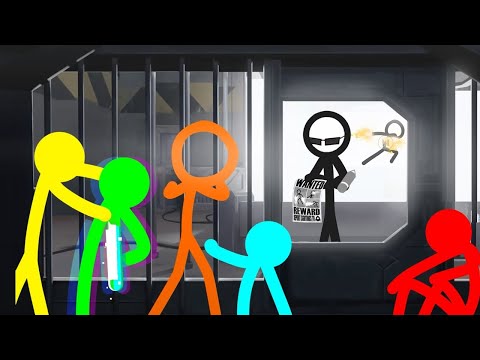Animator Job Description and Salary
Animator Job Description
An animator is a skilled professional who creates visual effects, illustrations, and animations using various computer software programs. They are responsible for bringing characters and objects to life through the use of motion graphics, special effects, and other techniques. Animators typically work in the film, television, gaming, and advertising industries.
The job description of an animator includes conceptualizing ideas, storyboarding, and creating character designs. They collaborate with other members of the creative team, such as directors and writers, to ensure that the animation aligns with the overall vision of the project. Animators also need to have a good understanding of timing, movement, and storytelling to create compelling and realistic animations.
In addition to technical skills, animators must possess strong artistic abilities and attention to detail. They should be creative, imaginative, and able to work well under pressure to meet deadlines. Strong communication and problem-solving skills are also essential in this role.
Animator Salary
The salary of an animator can vary based on factors such as experience, industry, and location. According to the Bureau of Labor Statistics, the median annual wage for multimedia artists and animators was $75,270 as of May 2020. The top 10% of animators earned more than $127,000, while the lowest 10% earned less than $41,000.
Animators working in the motion picture and video industries tend to earn higher salaries compared to those in other fields. Similarly, animators working in major cities or areas with a high cost of living may receive higher compensation. Experience also plays a significant role in determining an animator’s salary, with more experienced professionals often earning higher wages.
Overall, a career in animation can be financially rewarding, especially for highly skilled and experienced animators. However, it is important to note that competition in this field can be fierce, and success often requires continuous learning and staying up-to-date with the latest industry trends and technologies.

Animator Job Description Template
Animator Job Description:
An animator is a creative professional who uses their artistic skills and technical knowledge to bring characters, objects, and scenes to life through various forms of media such as films, video games, and advertisements. They work closely with directors, artists, and designers to create visually appealing and engaging animations.
The primary responsibility of an animator is to create movement and convey emotions through characters and objects. They utilize specialized software and tools to design and develop animations, ensuring that they are in line with the project’s requirements and artistic vision. Animators may be involved in every stage of the animation production process, from conceptualization and storyboarding to modeling, rigging, and final rendering.
Attention to detail is crucial for animators, as they need to meticulously refine and polish their work to achieve the desired results. They must possess a strong understanding of anatomy, physics, and movement principles to create realistic and believable animations. Creativity and imagination are also essential qualities as animators need to constantly come up with innovative and visually captivating ideas.
Additionally, teamwork and effective communication skills are vital for animators, as they often collaborate with other professionals in multidisciplinary teams. They must be able to take feedback and incorporate changes into their work accordingly. Time management and the ability to work under pressure are also important, as animators often have strict deadlines to meet.
In summary, animators play a crucial role in the entertainment industry, using their artistic and technical skills to create visually stunning and captivating animations. They need to be detail-oriented, creative, and collaborative, while also possessing a strong understanding of anatomy and movement principles.
Animator Responsibilities
- Create storyboards and concept art for animations
- Design and create characters, backgrounds, and props
- Animate characters and objects using various techniques and software
- Create and edit sound effects and music for animations
- Collaborate with a team of artists and animators to develop and refine animation projects
- Meet project deadlines and stay within budget constraints
- Stay up-to-date with industry trends and new animation techniques
- Attend meetings and provide input on animation projects
- Review and provide feedback on animation drafts and final products
- Ensure that animation projects meet quality standards and client requirements
Animator Requirements
- Strong drawing and illustration skills
- Proficiency in using animation software such as Adobe Animate, Toon Boom, or Autodesk Maya
- Knowledge of principles of animation, including timing, weight, and squash and stretch
- Ability to create and manipulate 2D or 3D characters and objects
- Understanding of storytelling and narrative techniques
- Attention to detail and ability to follow specific design guidelines
- Strong communication and collaboration skills to work effectively with a team
- Creativity and ability to come up with unique and innovative ideas
- Ability to work under tight deadlines and manage time efficiently
- Continuous learning and staying updated on the latest animation techniques and trends
Animator Salary
How much does a Animator make?
| Position | Salary |
|---|---|
| Junior Animator | $40,000 – $60,000 |
| Mid-Level Animator | $60,000 – $80,000 |
| Senior Animator | $80,000 – $100,000 |
An animator’s salary varies depending on the level of experience and expertise. Junior animators typically earn a salary ranging from $40,000 to $60,000 per year. Mid-level animators can expect to earn between $60,000 and $80,000 annually. Senior animators, with extensive experience and a high level of skill, can earn salaries ranging from $80,000 to $100,000 per year. These figures are approximate and can vary based on factors such as the company, industry, and location.
Animator Salaries by country.
Top Paying Countries for Animator
| Country | Average Annual Salary |
|---|---|
| United States | $75,000 |
| Canada | $60,000 |
| Australia | $55,000 |
| United Kingdom | $50,000 |
| France | $45,000 |
An animator’s salary can vary greatly depending on the country they work in. According to recent data, the top paying countries for animators are the United States, Canada, Australia, United Kingdom, and France. In the United States, animators can earn an average annual salary of $75,000, while in Canada, the average salary is around $60,000. Australia offers an average salary of $55,000, followed by the United Kingdom with $50,000, and France with $45,000. These figures may fluctuate based on experience, specialization, and the specific industry within each country.
A video on the topic Animator
Interview Questions for Animator
1. What inspired you to become an animator?
I have always been fascinated by the world of animation since I was a child. Growing up, I watched numerous animated films and television shows that sparked my imagination and made me want to bring characters to life through animation.
2. What skills do you think are necessary for a successful career in animation?
Attention to detail, creativity, strong drawing skills, knowledge of various animation software, the ability to work collaboratively, and a passion for storytelling are some of the key skills needed for a successful career in animation.
3. Can you describe your creative process when working on an animation project?
My creative process begins with brainstorming ideas and conceptualizing the characters and story. I then create rough sketches and storyboards to plan out the animation sequence. Once the initial planning is complete, I move on to animating the characters, adding details, and refining the overall animation until it meets the desired outcome.
4. How do you stay updated with the latest trends and techniques in animation?
I stay updated with the latest trends and techniques in animation by regularly attending industry conferences, workshops, and seminars. I also follow online communities and forums where animators share their work and discuss new techniques. Additionally, I often explore new animation software and experiment with different styles to expand my skillset.
5. What has been your most challenging animation project so far?
One of my most challenging animation projects was creating a complex fight sequence between two characters. It required meticulous attention to detail, fluid movement, and precise timing to make the action look realistic and engaging. However, overcoming the challenges and seeing the final result was incredibly rewarding.
6. How do you handle criticism or feedback on your animation work?
I view criticism and feedback as valuable opportunities for growth and improvement. I appreciate receiving constructive criticism, as it helps me identify areas where I can enhance my skills. I take feedback positively and use it to refine my work and deliver a better end product.
7. Can you share any memorable experiences or achievements in your animation career?
One of my most memorable experiences was when a short animation I worked on won an award at a prestigious film festival. It was a rewarding validation of my skills and efforts. Additionally, collaborating with a team of talented animators on a major animated feature film was also a highlight of my career.
8. How do you approach working in a team environment on an animation project?
I believe in open communication and collaboration when working in a team environment. I actively participate in team meetings, share ideas, and contribute to the overall vision of the project. I am also receptive to feedback and always willing to support my teammates to ensure the project’s success.
9. How do you manage your time and prioritize tasks during an animation project?
I am a highly organized individual and utilize project management tools to create a detailed timeline and schedule for each task. I break down the project into smaller, manageable tasks and set deadlines for each milestone. This helps me prioritize my workload and ensure that I meet project deadlines effectively.
10. What advice would you give to someone aspiring to become an animator?
My advice would be to never stop learning and practicing. Animation is a constantly evolving field, and it’s essential to stay updated with the latest techniques and software. Additionally, building a strong portfolio that showcases your skills and creativity is crucial for getting noticed by potential employers or clients. Lastly, don’t be afraid to take risks and experiment with different styles to develop your unique artistic voice.
The Best Universities For The Animator Profession.
- California Institute of the Arts (CalArts)
- School of Visual Arts (SVA)
- Rhode Island School of Design (RISD)
- Ringling College of Art and Design
- Savannah College of Art and Design (SCAD)
- University of Southern California (USC)
- University of California, Los Angeles (UCLA)
- University of California, Berkeley (UC Berkeley)
- University of California, Santa Cruz (UC Santa Cruz)
- Massachusetts Institute of Technology (MIT)






